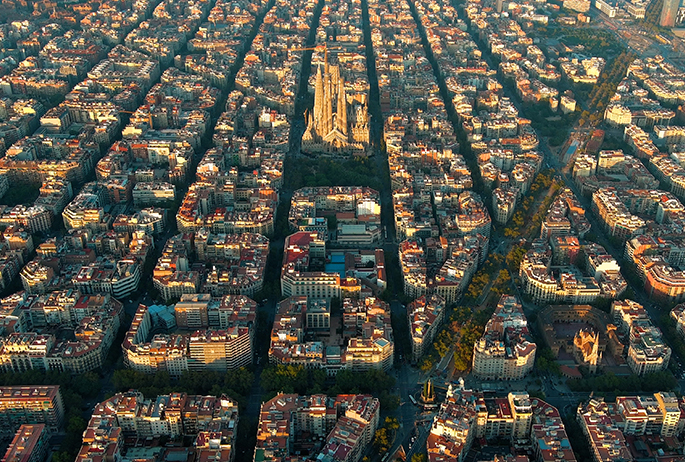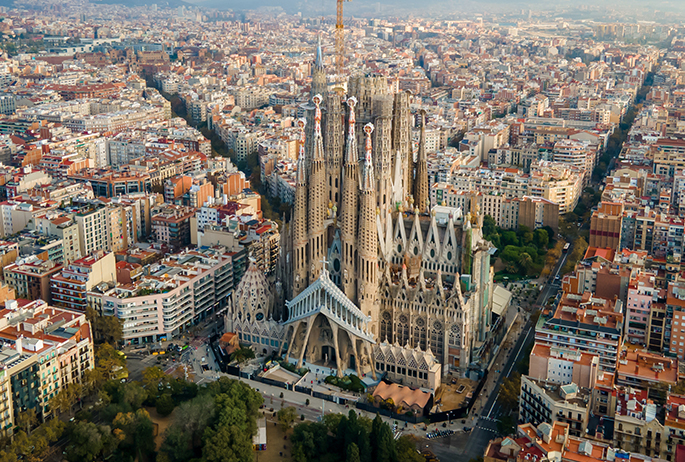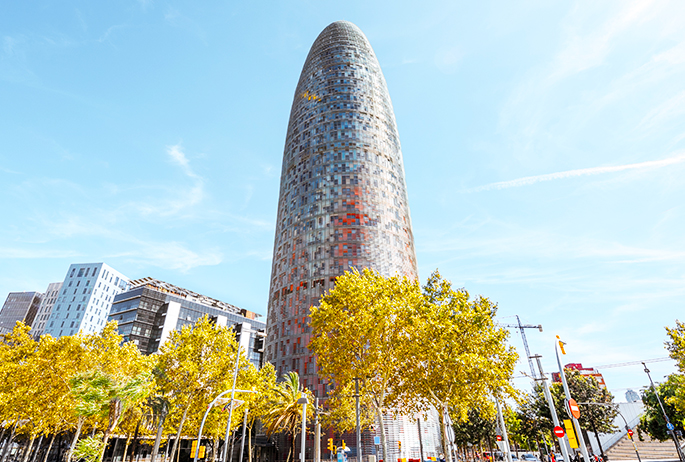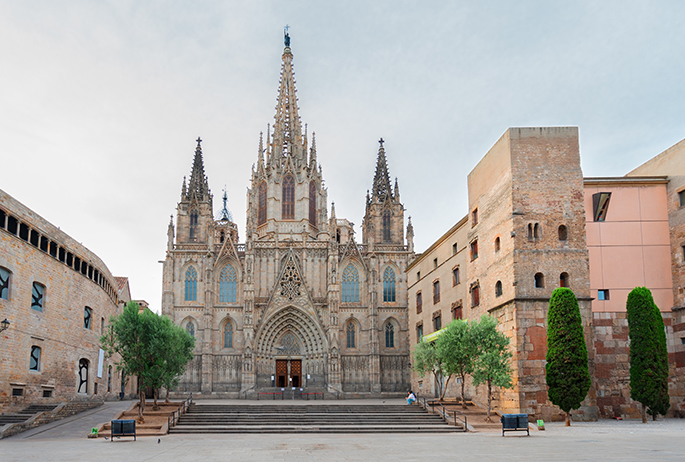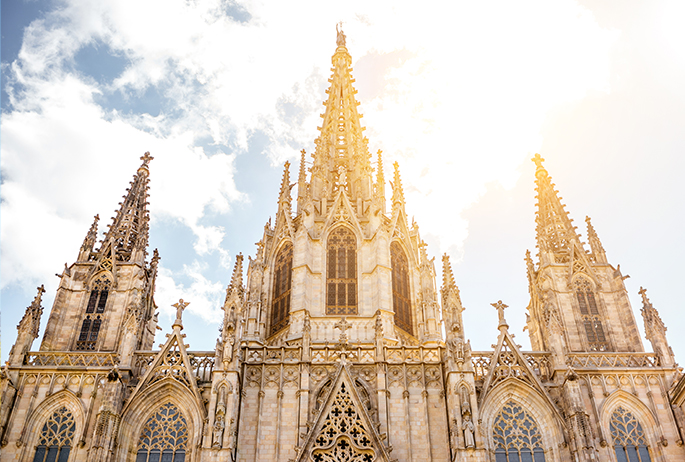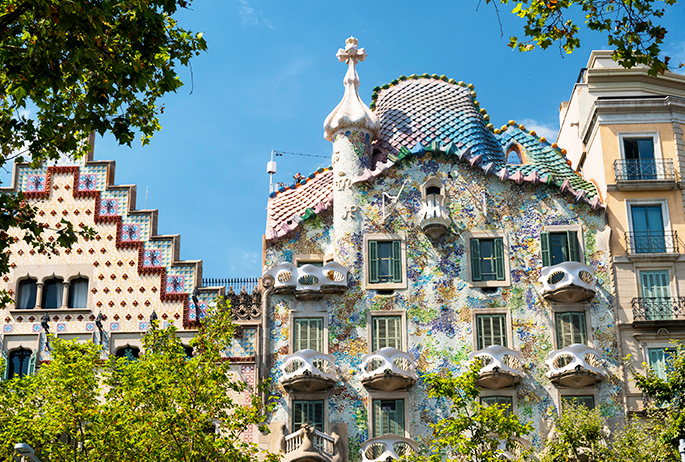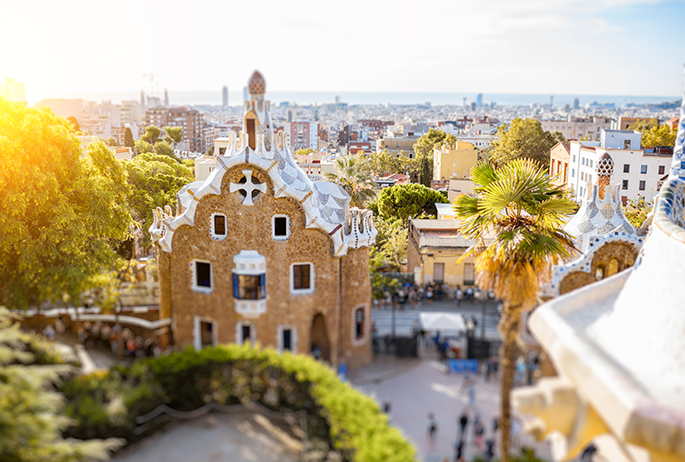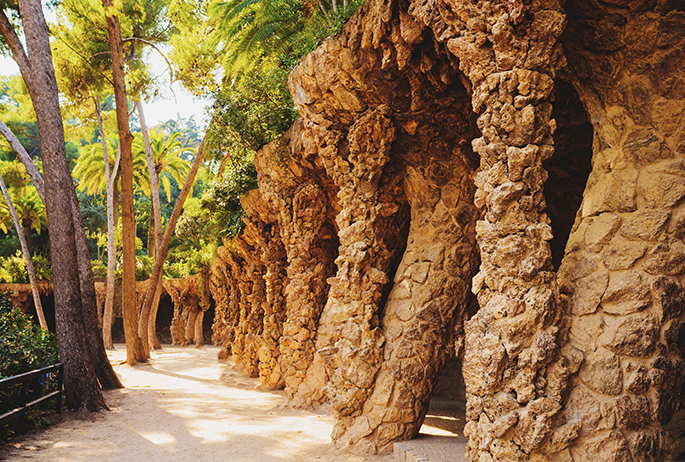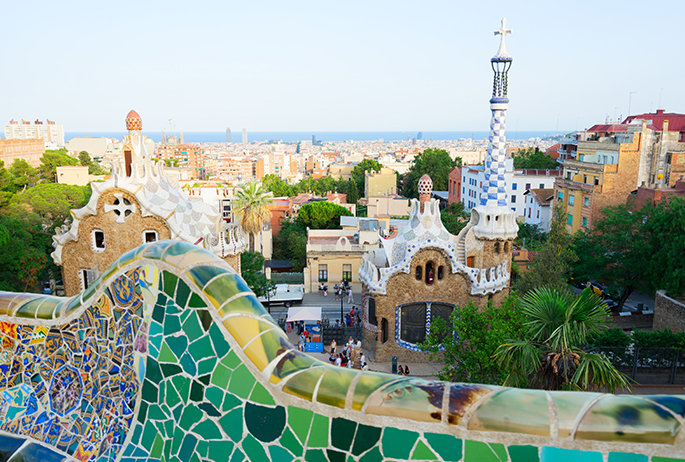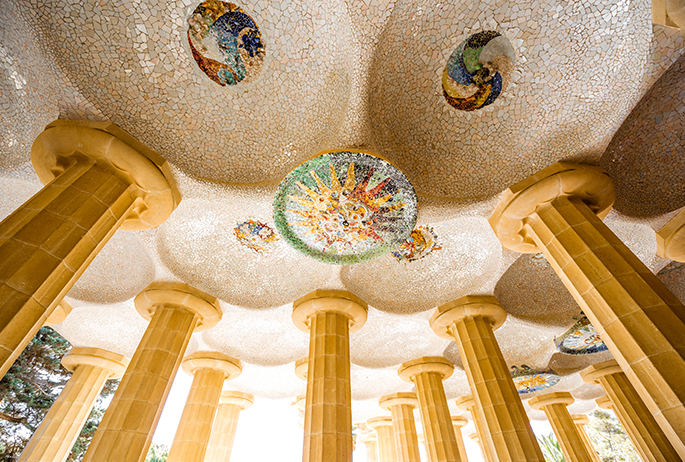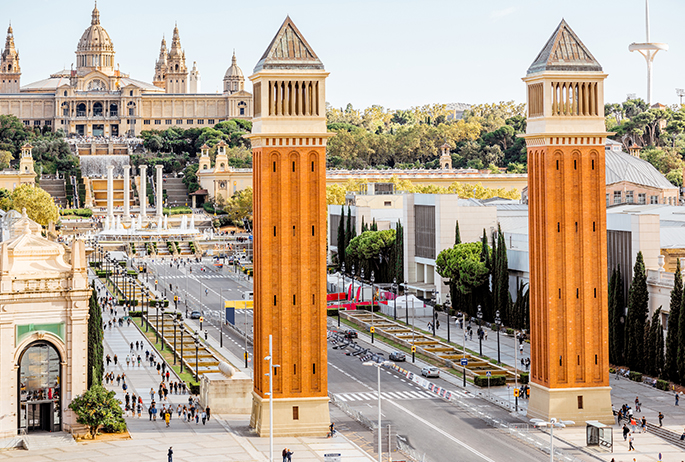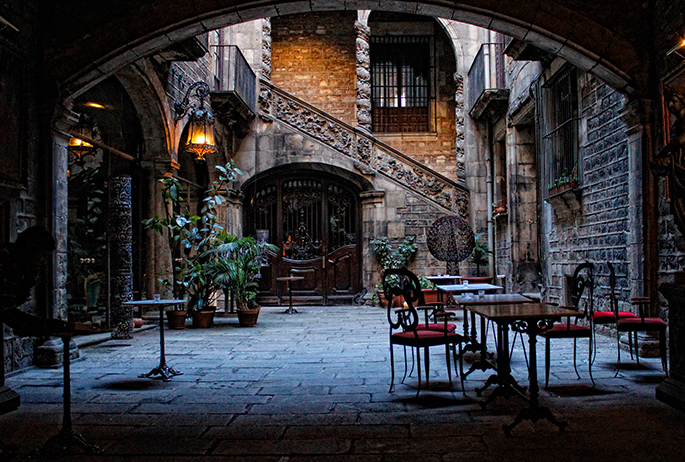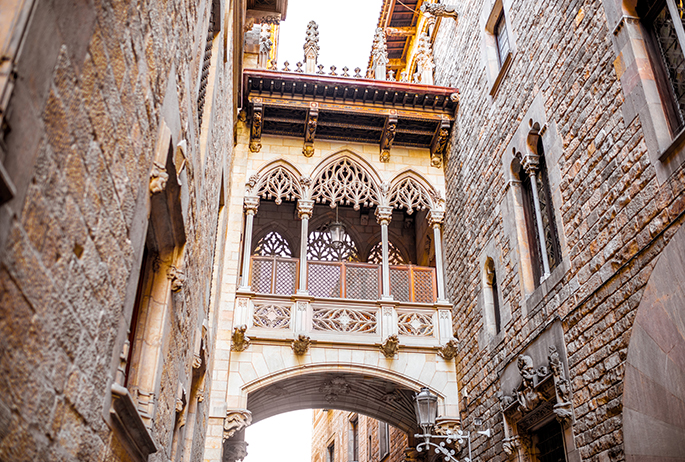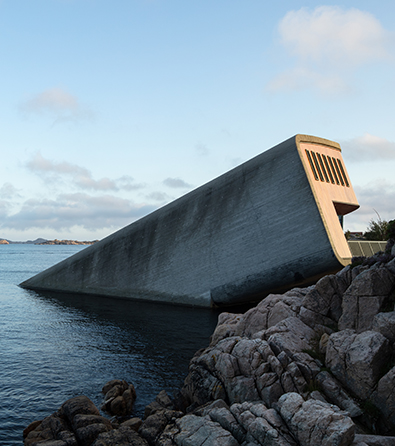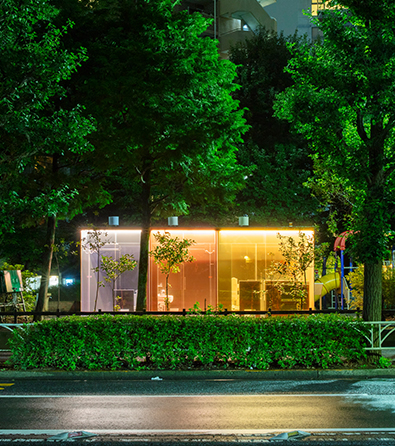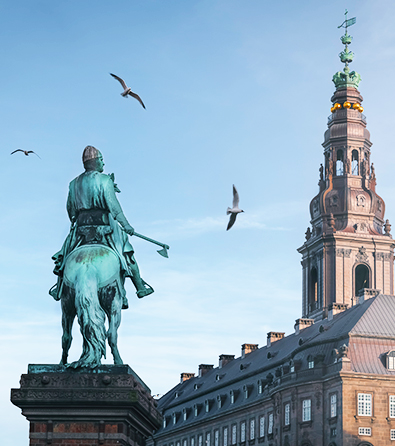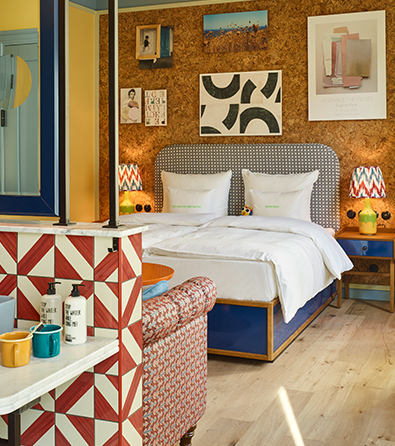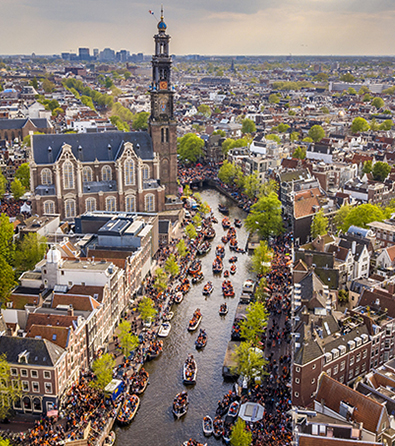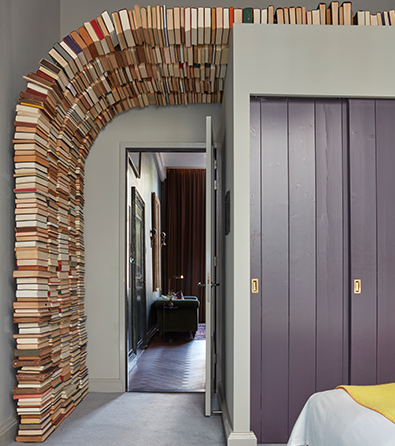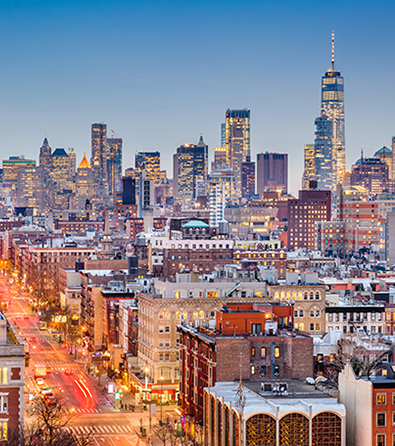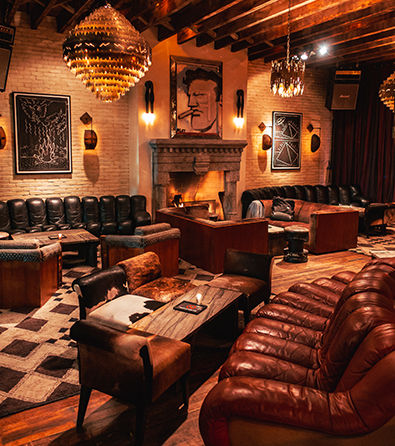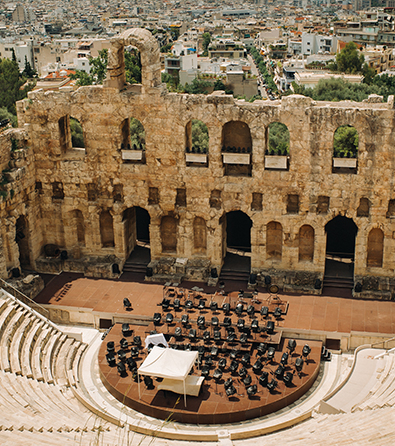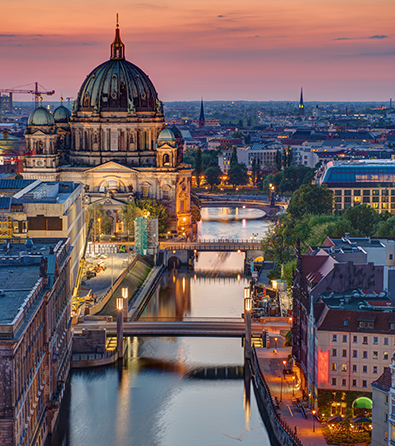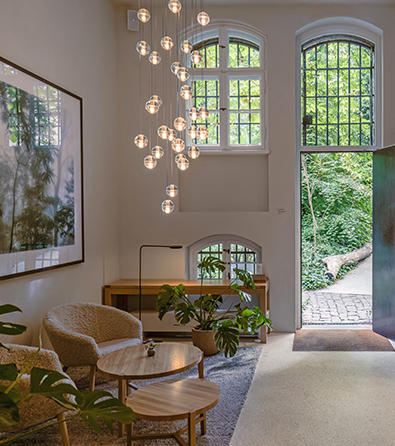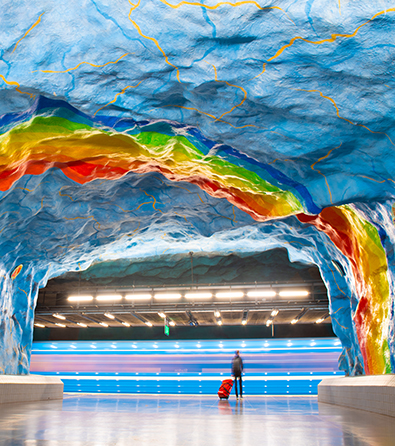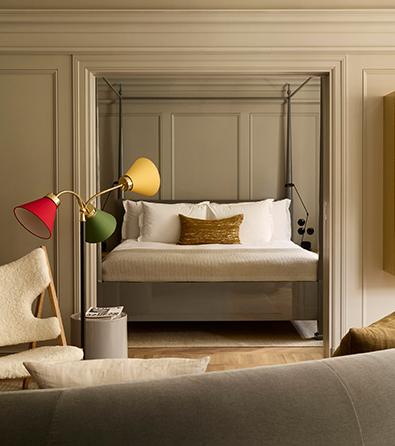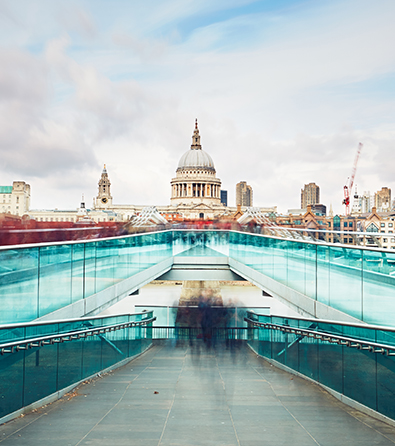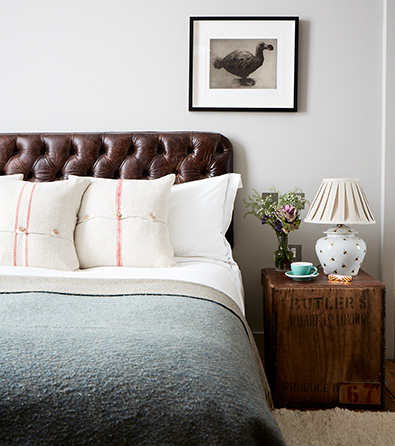Barcelona, the cultural jewel of Catalonia, Spain, is a city where Gaudí’s architectural masterpieces, La Sagrada Família, Casa Batlló, La Pedrera (Casa Milà), and Park Güell, sit alongside the timeless collections of the Picasso Museum and Fundació Joan Miró. Beyond the icons, Barcelona’s creative scene spans the Design Museum of Barcelona (Museu del Disseny), MACBA and MNAC, Modernisme facades across the Eixample, gallery clusters in El Born and the Gothic Quarter, and innovation hubs in Poblenou. This art, design and architecture guide maps the best museums and galleries, Gaudí highlights, street art, design shops and concept stores, neighborhood routes and practical tips, plus a downloadable map to plan a culture-first trip.
To access our exclusive Barcelona Treasure Map, simply click the attached link and become a Culture Treasures member. The map pins every place in this guide and adds bonus cafés, boutiques and cultural venues. Planning your stay? Explore our guide to the best design hotels in Barcelona, along with our curated urban travel essentials and long flight essentials for a comfortable journey.
Art Museums:
Museu Picasso (El Born / Carrer de Montcada 15–23)
Why go: The most complete view of Picasso’s Barcelona years, from student canvases and Blue Period works to the full Las Meninas series from 1957.
Tip: Book timed tickets in advance and go early. The museum spreads across five medieval palaces, so leave time to move between galleries.
Home to more than 4,000 works, the collection focuses on Picasso’s formative decades and his close bond with Barcelona. Highlights include early paintings like First Communion and Science and Charity, a deep Blue Period selection, ceramics and prints, and the complete reinterpretations of Velázquez’s Las Meninas. The setting itself is part of the experience, with courtyards, stone stairways, and Gothic details linking the five palaces on Montcada.
MACBA – Museu d’Art Contemporani de Barcelona (El Raval / Plaça dels Àngels 1)
Why go: Barcelona’s flagship for post-1945 art in Richard Meier’s luminous white museum, with a Catalan/Spanish core in dialogue with international work.
Tip: Closed on Tuesdays; book timed tickets. Expect skaters in the plaza out front, and check for ongoing expansion works that may affect access.
Designed by Richard Meier and built 1991–1995, MACBA anchors El Raval with light-filled ramps and galleries. The collection (around 5,000 works) traces mid-20th-century to present practice, Informalism to Conceptual, Minimalism, video and installation, featuring artists such as Antoni Tàpies alongside global peers. Rotating exhibitions and public programs keep the museum’s focus on contemporary debates alive.
Fundació Joan Miró (Montjuïc / Parc de Montjuïc)
Why go: The most complete Joan Miró collection, set in Josep Lluís Sert’s light-filled modernist building with sweeping city views.
Tip: Book timed tickets. Aim for late afternoon for quieter galleries and the rooftop sculptures. Closed Monday; check the calendar for special shows and family activities.
Opened in 1975, the foundation holds more than 14,000 works across paintings, sculptures, drawings, prints, and textiles, charting Miró’s full arc from early experiments to late, bold abstraction. Sert’s white galleries, patios, and skylights make the architecture part of the experience, while the museum’s contemporary program for emerging artists keeps Miró’s spirit of experimentation alive.
Art Galleries:
Prats Nogueras Blanchard (El Born / Ciutat Vella)
Why go: A new chapter for Barcelona’s scene: Galeria Joan Prats (est. 1976) merged with NoguerasBlanchard in 2024, creating a heavyweight platform for experimental and conceptual practices.
Tip: Check the Barcelona space’s program, then pair it with a stroll through nearby El Born galleries and design shops.
Born from two influential galleries, the joint program spotlights international and Spanish artists across installation, video, and research-driven work, carrying forward Joan Prats’s historic legacy while adding NoguerasBlanchard’s edge.
ADN Galeria (Eixample + ADN Platform, Sant Adrià de Besòs)
Why go: Barcelona’s go-to for socially engaged art, with a strong curatorial voice on politics, ecology, and media.
Tip: For large-scale and experimental shows, look for programming at ADN Platform on the city’s edge.
Founded in 2003, ADN operates a central gallery in Eixample and an outpost for ambitious installations, performances, and debates, bridging art and civic discourse.
Àngels Barcelona (El Raval)
Why go: Sharp program centered on contemporary culture, critical discourse, and media-based practices.
Tip: Pair a visit with MACBA for a compact El Raval art loop.
Expect exhibitions that probe image politics and urban narratives, often through photography, video, and conceptual installation.
Galeria Senda (Trafalgar / near Urquinaona)
Why go: A stalwart since 1991, championing both rising and established artists with an eclectic, risk-embracing program.
Tip: Time your visit with citywide events like Barcelona Gallery Weekend.
From its Trafalgar Street space, Senda presents painting, sculpture, and multimedia with a focus on diverse voices rather than a single house style.
3 Punts Galeria (Eixample / Enric Granados)
Why go: Consistent platform for emerging and mid-career artists since 1994, with focused exhibitions throughout the year.
Tip: Walk Enric Granados for a mini gallery crawl.
Shows span contemporary painting, sculpture, and mixed media, with a clear eye for new talent in an approachable Eixample setting.
Design:
Design Museum of Barcelona (Museu del Disseny) (Glòries / Plaça de les Glòries Catalanes 37–38)
Why go: Barcelona’s flagship for design, fashion, decorative arts, and graphic arts inside the angular Disseny Hub landmark.
Tip: Closed Monday. Pair your visit with Encants flea market next door and a walk to Torre Glòries; check the temporary exhibitions before you go.
Created by merging four former institutions (Decorative Arts, Ceramics, Textile & Clothing, and Graphic Arts), the museum presents thousands of objects from antiquity to today across product design, interiors, fashion, and visual communication. Galleries trace Catalan and international design history, while rotating shows focus on contemporary practice and the city’s design ecosystem. The building’s bold silhouette has become a Glòries icon, and onsite you’ll also find a library/documentation center and a well-curated design shop.
FAD – Foment de les Arts i del Disseny (Glòries / inside Disseny Hub Barcelona)
Why go: Barcelona’s umbrella organization for design, architecture, graphics, fashion, and craft, behind key awards, exhibitions, and talks that shape the city’s creative scene.
Tip: Check FAD’s calendar when you visit the Design Museum next door; openings and award shows often cluster around citywide design weeks.
A nonprofit nexus for Catalonia’s creative disciplines, FAD convenes professionals and students through juried awards, exhibitions, debates, and workshops. Its member associations span industrial and product design, graphic design and visual communication, architecture and interiors, and applied arts, making FAD a reliable pulse point for what’s new in Barcelona design.
Roca Barcelona Gallery (Les Corts / Joan Güell 211–213)
Why go: Flagship cultural space by bathroom brand Roca in a laminated-glass building by OAB (Carles, Borja, and Lucía Ferrater). Inside you’ll find exhibitions and showcases on design, innovation, and sustainability. Free entry.
Tip: Open Monday to Friday, closed weekends. Nearest Metro: L3 Les Corts or Maria Cristina. Visit at dusk to catch the façade’s light effects.
Opened in 2009, the gallery spans about 2,400 m² across three floors, hosting rotating installations, talks, and product presentations at the intersection of architecture, design, and water culture. The glass skin creates shifting reflections by day and a luminous presence at night, so the building itself doubles as an architectural experience.
BD Barcelona Design (Sant Martí / C. Ramon Turró 126)
Why go: Barcelona’s cult design editor that fuses art and furniture, from Dalí and Gaudí editions to contemporary collaborations like Jaime Hayon.
Tip: It’s a working HQ/showroom rather than a standard shop, check hours or call ahead; combine with a Poblenou design walk.
Founded in 1972 by architects Pep Bonet, Cristian Cirici, Lluís Clotet, Mireia Riera, and Òscar Tusquets, BD set out to produce boundary-pushing designs outside mass-market norms. The brand has earned Spain’s National Design Award (1989) and the European Community Design Prize (1990). Signature pieces range from Salvador Dalí’s Leda armchair and Muletas lamp to re-editions of Antoni Gaudí furniture and Hayon’s Showtime series, mixing artisanal craft with industrial techniques to create collectible design.
House of Chappaz Basement (formerly Espai Tactel Toormix) (Gràcia / inside the Toormix studio space)
Why go: A hybrid art-and-design program where contemporary art meets visual communication and experimental practice.
Tip: Shows run in cycles, check what’s on before you go, then wander Gràcia for more independent spaces.
Founded as Espai Tactel in Valencia and later expanded to Barcelona in partnership with the Toormix design studio, the project rebranded as House of Chappaz in 2021. The Barcelona space, now “Basement”, keeps the original spirit: intimate exhibitions, emerging and established artists, and crossovers with design, publishing, and installation that make for sharp, idea-driven shows.
Architecture:
Basílica de la Sagrada Família (Eixample / Carrer de Mallorca 401)
Why go: Gaudí’s unfinished basilica with soaring spires, a tree-like nave, and luminous stained glass. Barcelona’s defining Modernisme landmark and a UNESCO World Heritage site (Nativity Façade and Crypt).
Tip: Book timed tickets well in advance. Early morning or late afternoon shows the stained glass at its best. Tower access is a separate ticket with age and weather restrictions. It is an active church, so dress modestly and check Mass times.
Begun in 1882 and taken over by Antoni Gaudí in 1883, the basilica embodies his fusion of structure, nature, and symbolism. Eighteen spires are planned to honor Christ, the Virgin Mary, the four Evangelists, and the twelve Apostles. The completed Nativity and Passion façades frame an interior that feels like a stone forest, with branching columns and skylights that guide color across the nave. The project is still under construction, funded by donations and ticket sales, which lets visitors witness living craftsmanship as the building evolves.
Casa Batlló (Eixample / Passeig de Gràcia 43)
Why go: Gaudí’s fantastical townhouse, a UNESCO-listed masterpiece with a dragon-back roof, bone-like balconies, and richly crafted interiors.
Tip: Book timed tickets in advance. Go early or late for fewer crowds, and choose a ticket that includes the rooftop and immersive rooms.
Originally built in 1877, the house was purchased by Josep Batlló in 1903 and radically remodeled by Antoni Gaudí from 1904 to 1906. Gaudí kept the main structure but reimagined everything else, redesigning the façade in trencadís mosaic, enlarging the central light well for natural ventilation, reshaping the staircase and salons, and raising the roofline with a sculptural attic and terrace. Recognized in 2005 as part of the UNESCO “Works of Antoni Gaudí,” Casa Batlló draws well over a million visitors each year, with multilingual audio guides that highlight the building’s symbolism and craft.
Park Güell (Gràcia / Carrer d’Olot entrance)
Why go: Gaudí’s hillside garden city turned public park, with trencadís mosaics, the Dragon Stairway, the Hypostyle Room, and sweeping views over Barcelona.
Tip: The Monumental Zone has timed entry. Book ahead, go early or late for lighter crowds, and wear good shoes for the climbs. The Gaudí House Museum inside the park is a separate ticket.
Commissioned by Eusebi Güell in 1899 as an exclusive residential estate, the project began in 1900 but only two of the planned sixty houses were built. The site opened as a public park in 1926 and is now part of the UNESCO listing “Works of Antoni Gaudí.” Highlights cluster in the Monumental Zone: the grand stair with the ceramic salamander, the forest of columns in the Hypostyle Room, and the long serpentine bench framing the main terrace. Gaudí’s nature-inspired structures and colorful mosaics blur built form and landscape, while the upper paths and viaducts offer some of the best city panoramas.
Palau de la Música Catalana (El Born / Carrer del Palau de la Música 4–6)
Why go: Catalan Modernisme at its most exuberant, Lluís Domènech i Montaner’s UNESCO-listed concert hall with a spectacular stained-glass skylight and lavish mosaics.
Tip: Book a performance or a guided tour in advance. Midday light makes the skylight glow; allow time to enjoy the mosaic-columned foyer and the sculptural corner façade.
Built 1905–1908 and opened in 1908, the Palau fuses craft and engineering to bring natural light deep into the auditorium, so daytime concerts need little artificial lighting. Inside, the celebrated stained-glass “sun” crowns a riot of tile, sculpture, and floral reliefs; outside, the richly decorated façade and monumental corner sculpture announce the building’s civic pride. Recognized by UNESCO in 1997, it remains a living symbol of Catalan culture with a year-round program of concerts and guided visits.
Pont del Bisbe (Barri Gòtic / Carrer del Bisbe)
Why go: Barcelona’s most photographed “medieval” bridge, actually a 1928 neo-Gothic gem by Joan Rubió i Bellver, linking Palau de la Generalitat with Casa dels Canonges.
Tip: Go early morning or late evening to dodge crowds. It spans an active government corridor, so expect security nearby and avoid blocking the street for photos.
Built as part of a 1920s revival of the Gothic Quarter, the stone walkway arches over the narrow lane with traceried windows, carved details, and the famous skull motif beneath. Though not truly medieval, its craftsmanship and atmosphere frame classic views between the Cathedral and Plaça de Sant Jaume, an easy, must-see stop on any old-city stroll.
Torre Glòries (Poblenou / Av. Diagonal 211)
Why go: Jean Nouvel’s 38-story landmark (with b720 Fermín Vázquez), wrapped in a programmable LED skin, an icon of contemporary Barcelona.
Tip: For night photography, time your visit after sunset when the façade animations run; combine with a stroll around Plaça de les Glòries and the Design Museum.
Elliptical in plan and 144 meters tall, Torre Glòries anchors the city’s tech district. Its double façade, glass louvers over a colorful aluminum shell, filters light by day and becomes a luminous beacon by night, marking the junction of Diagonal and Avinguda Meridiana.
Barcelona Pavilion (Montjuïc / Av. Francesc Ferrer i Guàrdia 7)
Why go: Mies van der Rohe and Lilly Reich’s minimalist masterpiece for the 1929 International Exposition, rebuilt in 1986 and still a pilgrimage site for architects.
Tip: Go early for quiet reflections in the water courts; look for the green onyx wall, travertine, and the classic Barcelona Chair.
A serene composition of floating roofs, slender cruciform columns, and luxurious materials, the Pavilion distills modern architecture into space, plane, and light. Its reconstruction faithfully preserves the original’s radical clarity and calm.
COAC – Col·legi d’Arquitectes de Catalunya (Gothic Quarter / Plaça Nova 5)
Why go: The city’s architecture hub with exhibitions, talks, and an important archive, fronted by Picasso’s sandblasted frieze on the façade.
Tip: Check the calendar for temporary shows in the ground-floor galleries; it’s steps from the Cathedral, so easy to add to an Old City walk.
COAC’s headquarters hosts the Centre Obert d’Arquitectura program, presenting contemporary and historical architecture through rotating exhibitions, lectures, and public events. The building’s plaza-side reliefs, derived from Picasso drawings, make it a cultural landmark in their own right.
Take a break:
El Xampanyet (El Born): Classic standing-room tapas for anchovies, boquerones, tortilla, and house cava. Try: canned seafood with cava. Tip: No reservations; go at opening.
Quimet & Quimet (Poble-sec): Tiny counter bar famed for creative montaditos and top conservas with vermouth. Try: salmon, yogurt, truffle-honey montadito. Tip: Very small; aim for opening.
Bar del Pla (El Born): Modern Catalan tapas with standout bravas and seasonal plates. Try: patatas bravas and the chalkboard specials. Tip: Book if possible; walk-in wait is common.
Cervecería Catalana (Eixample): Big, always-buzzing institution with a huge menu of classics and pinchos. Try: mini burgers, croquetas, grilled prawns. Tip: Expect a queue at peak times.
Bodega Biarritz 1881 (Gothic Quarter): Cozy spot known for generous set-style tapas and friendly service. Try: chef’s selection and baked goat cheese. Tip: Tiny space; arrive early.
La Cova Fumada (Barceloneta): Old-school bar credited with inventing the bomba. Chalkboard menu and fast turnover. Try: bombas, sardines, chickpeas with squid. Tip: Go early; cash often preferred.
Vintage delight:
Holala! (Raval and central Barcelona)
Pioneer of the city’s vintage scene with clothing, accessories, and some furniture from the 1950s to 1990s. Multiple locations; expect big, well-stocked racks.
Lullaby (Gràcia)
Carefully curated women’s vintage from the 1920s to 1980s. Good for dresses, bags, and statement pieces in great condition.
Els Encants Vells Flea Market (Glòries)
One of Europe’s oldest flea markets. Huge mix of vintage clothing, furniture, records, books, and curios. Go early for the best finds.
Lost & Found Market (seasonal pop-up)
Recurring vintage and second-hand market with clothing, accessories, and design objects. Dates and venues vary through the year.
Le Swing Vintage (El Born)
High-end designer vintage with a strong edit of garments and accessories from sought-after European and luxury labels.
Riera Baixa vintage row (El Raval)
A small street lined with long-running vintage shops offering affordable finds from multiple eras. Great for a quick multi-store browse.
And Beyond:
Montjuïc (Sants-Montjuïc / hill above the harbor)
Why go: Barcelona’s culture hill, panoramic views plus a dense cluster of sights: Montjuïc Castle, MNAC, Fundació Joan Miró, Poble Espanyol, Olympic sites, gardens, and the Magic Fountain.
Tip: Ride the Funicular de Montjuïc from Paral·lel, then the cable car or bus 150 up to the castle. Many museums close on Monday; the Magic Fountain runs only on select evenings, so check schedules. Wear good shoes, there are climbs and stairs.
Montjuïc (“mountain of the Jews”) is commonly linked to a medieval Jewish cemetery on its slopes. First fortified in the 17th century (the current star-fort largely dates to the 18th), the hill later hosted the 1929 International Exposition and the 1992 Olympic venues, layering history with parks and cultural institutions. Highlights range from the stained-glass grandeur of the Palau Nacional (home to MNAC’s Romanesque and Gothic collections) to the open-air architecture museum Poble Espanyol, terraced gardens, and the after-dark light-and-water show at the Magic Fountain.
Dalí Theatre-Museum (Figueres / Girona province)
Why go: An immersive museum designed by Salvador Dalí himself, his largest collection anywhere, complete with surreal installations like the Rainy Taxi and the famous Mae West Room.
Tip: Book timed tickets in advance and add the adjacent Dalí Jewels gallery. From Barcelona, take a fast train to Figueres Vilafant (then bus/taxi) or the R11 to Figueres town station. Go early to beat tour groups.
Opened in 1974 on the ruins of Figueres’s war-damaged municipal theater, the museum is topped with a geodesic dome and crowned by egg finials and golden figures. Inside, Dalí stages a total artwork: a courtyard Cadillac that “rains,” theatrical sets, paintings, drawings, objects, and optical illusions. Dalí is buried in a crypt beneath the former stage, making the site both a monument to his imagination and a pilgrimage for surrealism fans.
With the interactive map below, you can compare all available accommodation options in the city and find the best prices from a variety of leading providers.
